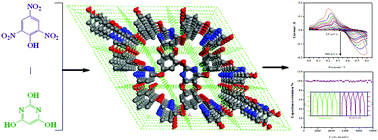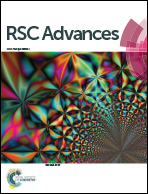A new COF linked by an ether linkage (–O–): synthesis, characterization and application in supercapacitance†
Abstract
A new COF (NWNU-COF-4) linked by an aryl ether bond (Ar–O–Ar) was synthesized by the condensation reaction of 2,4,6-trihydroxypyrimidine and trinitrophenol under simple and easy reaction conditions. Fourier transform infrared spectroscopy (FT-IR), X-ray photoelectron spectroscopy (XPS), N2 adsorption–desorption, thermogravimetric analysis (TGA), powder X-ray diffraction (XRD) and scanning electron microscopy (SEM) were utilized to characterize the product. The BET specific surface area of NWNU-COF-4 was 21.33 m2 g−1, and its pore size was about 1.351 nm. Additionally, this method of preparation was simple and cheap. The electrochemical measurements showed that the synthesized NWNU-COF-4 had excellent pseudocapacitive performance with maximum specific capacitance of 133.44 F g−1 at 0.3 A g−1 in 6 mol L−1 KOH electrolyte. When the current density increased by 10 times (3.0 A g−1), the specific capacitance was 114.12 F g−1, and the retention rate was 82%. After 10 000 GCD cycles, the capacitance still kept 94% of its initial capacitance.



 Please wait while we load your content...
Please wait while we load your content...